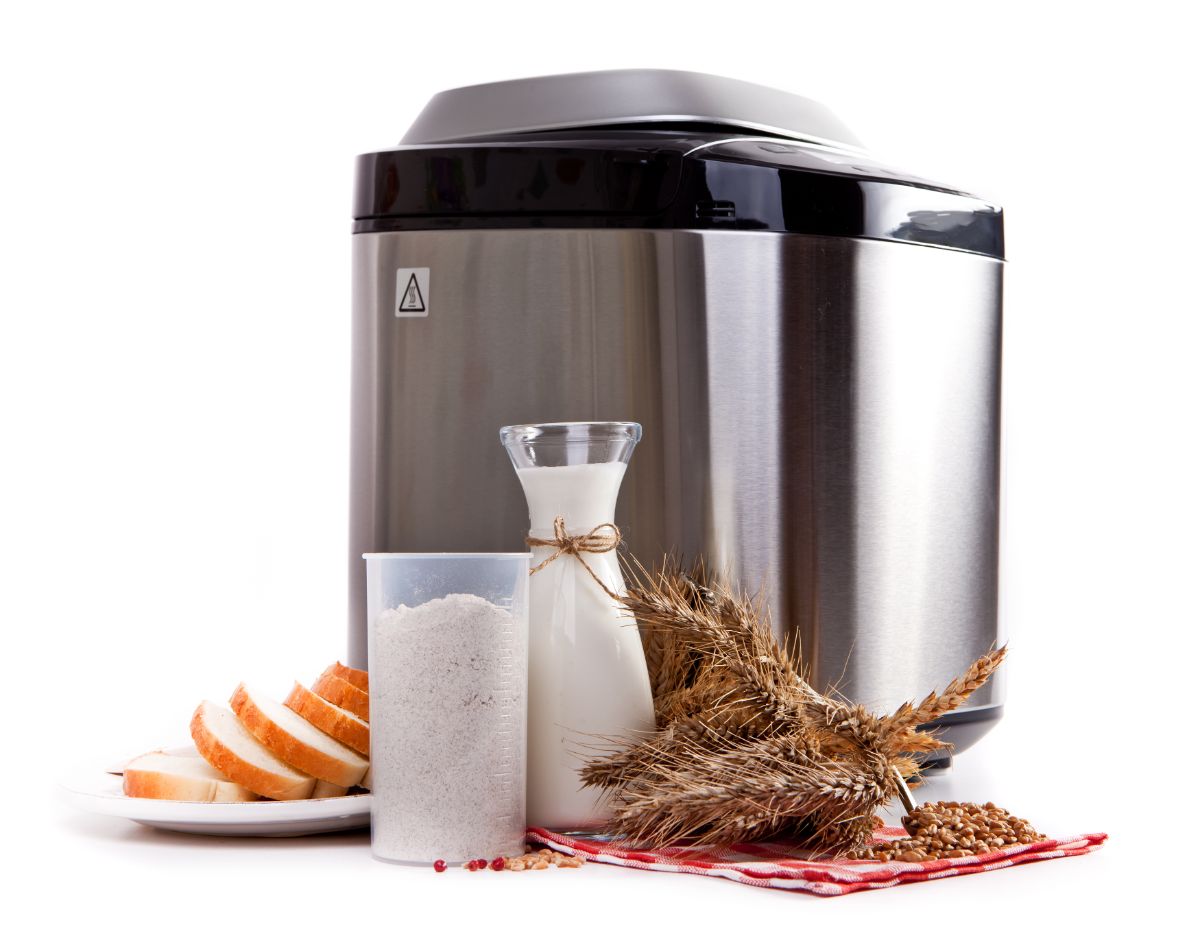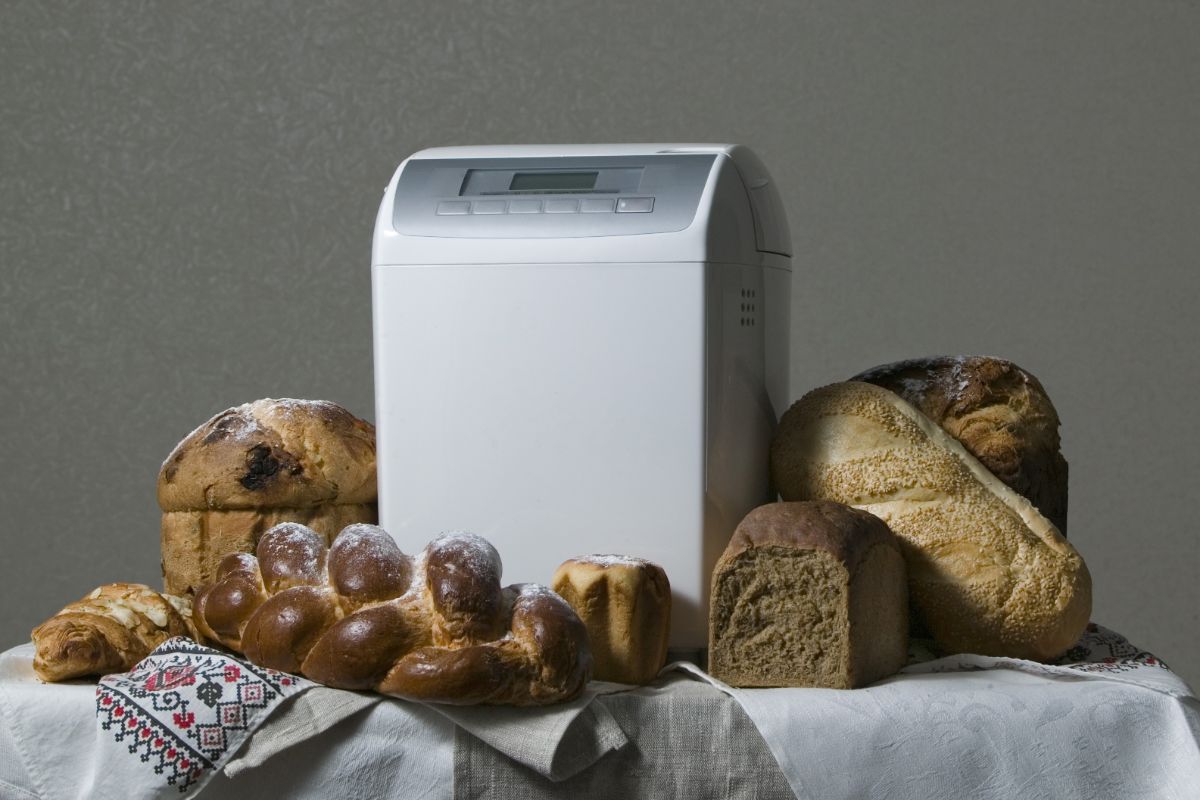The bread machine itself was invented in 1986. The bread makers started to become popular throughout ’90. By the middle of the 1990s, there were around 25 million of them in American kitchens.

They started to fade in popularity, but they’ve made a comeback. This is in part because the latest generation of breadmakers is “smarter”. For example, more advanced bread makers allow you to make rice, yogurt, and meatloaf in addition to bread and cakes.
A number of bread makers or bread machines are essentially multi-function cookers, capable of slow-cooking stew, keeping sauce warm or letting you scramble eggs.
A fair number will let you make pizza dough and keep it warm or make jam. Now you get more use out of an appliance taking up valuable counter real estate.
Newer breadmaker designs are also much easier to clean than their predecessors. For example, non-stick baking baskets and dishwasher-safe mixing paddles eliminate the biggest complaint against older designs. You aren’t trading initial prep work for an hour of scrubbing in the sink.
Didn’t bread makers appear before then?
Bakeries have used automated ovens to make bread since the 1950s. However, those were industrial ovens, not something available to the average person.
The first bread maker for home use was rolled out by Matsushita Electric, now called Panasonic. It was revolutionary because it miniaturized the commercial bread maker design to something that could fit on your countertop.
Why are bread machines popular?
Making bread the old-fashioned way is time-consuming. It is also hard to do right if you’re inexperienced. Bread-makers hold the promise of mixing it, set it and forget it until you’re ready to eat your fresh bread.

Bread makers declined in popularity by 2000 because the market was saturated. They’ve started to make a comeback for several reasons.
One factor is the “eat clean” movement. People want to know what is in their food, and bread from a bread machine contains only what they add.
Another is the “slow food” movement, an extension of the do-it-yourself and handicrafts fad. It is something of a status symbol to spend hours making your own stuff, and that includes every facet of your meal. You can also experiment with the ingredients and make your own artisanal loaf.
Add ancient grains, nuts, fruit or other ingredients to find something you like. An underappreciated trend has been the gluten-free phase in society. Gluten-free bread is expensive. Making your own alternative bread is often cheaper. This is especially true if you can’t eat wheat or the biggest gluten-free alternatives due to food allergies.
Conversely, our society is accustomed to on-demand everything. Many modern breadmakers can accommodate this, too, due to express bake settings that can create a new loaf of bread in an hour.
What are the biggest benefits of using a bread maker?
Because the bread maker does the kneading and then the cooking, there’s far less mess. Just mix up the ingredients and add them to the bread maker. In fact, in some units, you just add the solid and liquid ingredients and let the machine mix them up.
The growth of bread maker mixes you simply throw into the bread maker simplifies everything, making it easier to use the bread maker.
The greatest benefit of the bread maker is that it works while you’re elsewhere. It will knead the dough and contain the bread while it is rising. You don’t have to take breaks from what you’re doing to take care of the bread. Depending on the unit, you could set it to start the bread at a particular time.
It can even keep your sourdough starter or friendship bread starter in the bread maker and just add flour, water, and other ingredients. A common feature is being able to choose how dark the crust will be.
The bread maker removes a lot of the uncertainty. You don’t have to wonder when it is done rising and how long it needs to cook.
The bread maker controls all of this through a timer. You could even set up bread to bake overnight and let it keep the bread warm until you’re ready to eat it for breakfast.
For many, the breadmaker is the more “green” option. The breadmaker won’t use as much electricity or natural gas as a large oven. Because it is an electric appliance sitting on your counter, it is also safer to leave running overnight than your oven.
Smarter bread makers also minimize food waste.
You can choose whether to make a one-pound or two-and-a-half-pound loaf in the larger units. However, you’ll always pay more for greater capacity.
We’ve also seen a rise of compact bread makers that can put out a one-pound loaf while sitting on the counter but can be stowed in the cabinet, too. That is a significant improvement over the twenty-pound (or heavier) units that were far larger than a bread box.
Why do some people criticize the bread makers?
Early bread machines often created loaves with strange shapes. The uneven mixing, for example, could give you a loaf with a ski-slope shape.
You’d have to open the bread maker to reform the loaf before it baked. That was a matter of trial and error in terms of timing, while repeatedly opening the bread maker to check on it resulted in under-cooked bread.
Another mistake people made was forgetting that bread made without preservatives goes bad faster. You should eat it as soon as possible. It won’t last a week like store-bought bread. Setting the machine on the wrong setting will result in “defective” bread, and it is easy for someone to blame the machine.
Fail to clean the paddles or baking pan well enough, and you’re at risk of getting food poisoning. Adding too many ingredients causes it to overflow. That creates a hard-to-clean-up mess and undercooked bread.
Or they blame the machine because they were unhappy with the results, though it is really due to them not adding enough water or flour.
